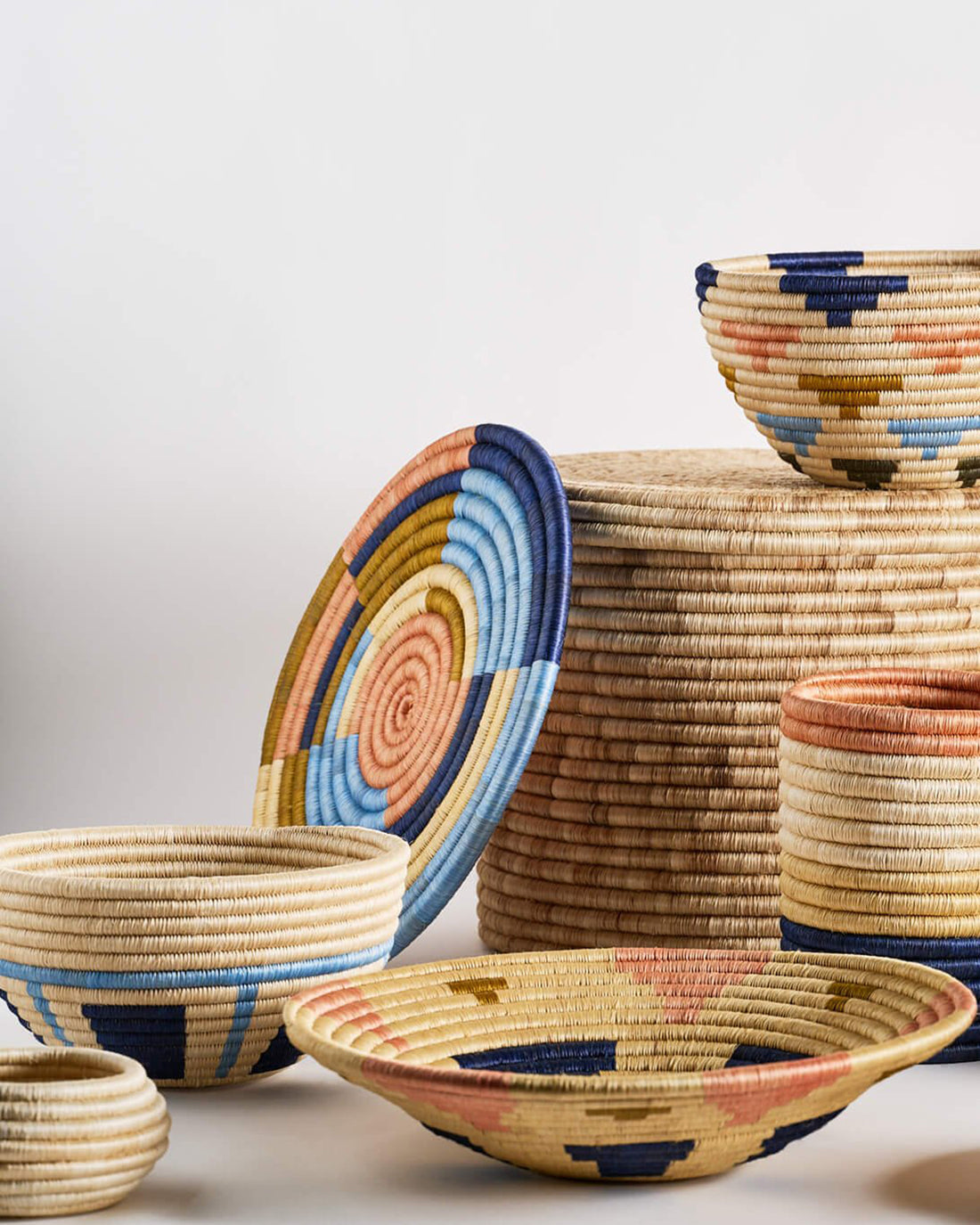In the heart of Colombia, a captivating tradition unfolds as skilled artisans from an artisan cooperative in Guacamayas, Boyacá, bring to life the timeless art of basket weaving. This ancient craft, rooted in the cultural heritage of the indigenous Laches community, is now being rejuvenated and celebrated by the women of the Crearcoop artisan collective, creating modern designs for home decor brands. Their commitment to preserving the intricate hand-coiling techniques passed down through generations is not just an artistic endeavor, but a mission to support the local economy and empower women.
Inspiration from Cartagena
The essence of the city of Cartagena, with its vibrant streets, fresh fruit juices, and infectious cumbia rhythms, serves as the muse for the latest basket collection from Crearcoop (and that you can find in our store). A dedication to Afro-Colombian culture and the people of Cartagena, past and present, breathes life into each carefully woven piece.
The Art of Coil Sewing
The craftswomen at Crearcoop employ the coil sewing technique to weave their masterpieces. Starting from a central point, the coiling stitch spirals outward and upward, forming the unique shapes of the baskets. Flexible fique sticks are bundled together, wrapped with fique fiber, and each coil is threaded through with a needle to connect it to the button coil, creating not only functional items but true works of art. Different colored fique fiber can be incorporated into the coiling to create beautiful designs.
The Fique Fiber and Its Heritage
Central to this exquisite craft is the use of fique, a natural fiber derived from the leaves of plants in the Furcraea genus. Fique has deep historical roots, dating back to the indigenous peoples of the Americas, who utilized its fibers for garments, ropes, and hammocks. The Dutch colonists later introduced it to various regions, including Colombia in the 18th century, where it became a national fiber.
Versatility of Fique
Fique's versatility shines through its various applications, from dense weaves for packaging flour and grains, to looser weaves for fruits and vegetables. The fiber also finds its way into crafting robust ropes used in transportation, construction, and sailing. Other parts of the plant are also very useful: paper can be made from the pulp, juice from the leaves can be used to make soap, fungicides and alcoholic beverages, and the bulbs of the plant can be pickled and eaten!
Incorporating Baskets into Modern Home Decor:
Now, let's explore how these handcrafted baskets can seamlessly integrate into modern home decor:
- Wall Art: Arrange a set of assorted baskets in varying sizes and colors on your wall to create a visually striking display.
- Storage with Style: Utilize larger baskets as chic storage solutions for blankets, magazines, or even indoor plants, adding both functionality and aesthetic appeal.
- Table Centerpieces: Place a vibrant fique basket as a centerpiece on your dining or coffee table, instantly infusing warmth and character into the space.
- Hanging Planters: Suspend smaller baskets from the ceiling and use them as charming hanging planters, bringing a touch of nature indoors.
- Unique Lighting: Transform a fique basket into a pendant light fixture for a one-of-a-kind lighting element that adds an artisanal flair to any room.
Conclusion
Modern basket weaving in Colombia is not just a craft; it's a testament to the rich cultural tapestry of the region. Through the hands of the dedicated women at Crearcoop, ancient techniques find new life in contemporary settings. As these handcrafted baskets become integral parts of modern homes, they carry with them the stories of tradition, sustainability, and the vibrant spirit of Colombia. At Atacama Home we are proud to bring these beautiful baskets to the US and share them with you.

